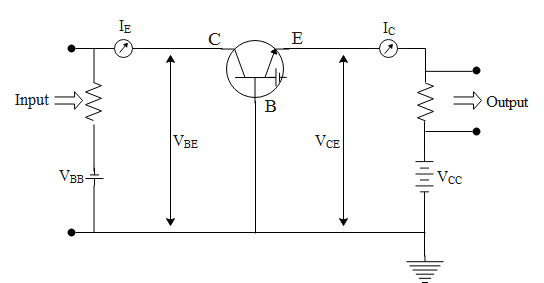
The current gain
A. the ratio of change in collector current to the change in emitter current for a constant value of collector voltage in a common base arrangement.
B. the ratio of change in collector current to the change in base current for a constant value of collector voltage in a common collector arrangement
C. the ratio of change in collector current to the change in base current for a constant value of collector voltage in a common emitter arrangement
D. the ratio of change in emitter current to the change in collector current for a constant value of collector voltage in a common emitter arrangement
Answer
501.3k+ views
Hint: Usually there are two types of current gains defined for a transistor. They are denoted by
Complete step by step answer:
Current gain is basically the amplification of current when held in a particular configuration. As mentioned in the hint there are two types of current gain. Now let us define them.
Common base current amplification factor: It is defined as the ratio of small change in collector current to the small change in emitter current when the collector-base voltage is kept constant i.e.
Common emitter current amplification factor: It is defined as the ratio of small change collector current to the small change in base current when collector-emitter voltage is kept constant i.e.
So, the correct answer is “Option A”.
Note:
Given below is the figure showing the transistor configuration in the common base(CB) circuit.

Above we defined the current gains for common base configuration i.e.
Complete step by step answer:
Current gain is basically the amplification of current when held in a particular configuration. As mentioned in the hint there are two types of current gain. Now let us define them.
Common base current amplification factor: It is defined as the ratio of small change in collector current to the small change in emitter current when the collector-base voltage is kept constant i.e.
Common emitter current amplification factor: It is defined as the ratio of small change collector current to the small change in base current when collector-emitter voltage is kept constant i.e.
So, the correct answer is “Option A”.
Note:
Given below is the figure showing the transistor configuration in the common base(CB) circuit.

Above we defined the current gains for common base configuration i.e.
Latest Vedantu courses for you
Grade 11 Science PCM | CBSE | SCHOOL | English
CBSE (2025-26)
School Full course for CBSE students
₹41,848 per year
Recently Updated Pages
Master Class 10 Science: Engaging Questions & Answers for Success

Master Class 10 Social Science: Engaging Questions & Answers for Success

Master Class 10 Maths: Engaging Questions & Answers for Success

Master Class 10 English: Engaging Questions & Answers for Success

Class 10 Question and Answer - Your Ultimate Solutions Guide

Master Class 9 General Knowledge: Engaging Questions & Answers for Success

Trending doubts
Give 10 examples of unisexual and bisexual flowers

Draw a labelled sketch of the human eye class 12 physics CBSE

Differentiate between homogeneous and heterogeneous class 12 chemistry CBSE

Differentiate between insitu conservation and exsitu class 12 biology CBSE

What are the major means of transport Explain each class 12 social science CBSE

What is the difference between resemblance and sem class 12 social science CBSE

Students Also Read



